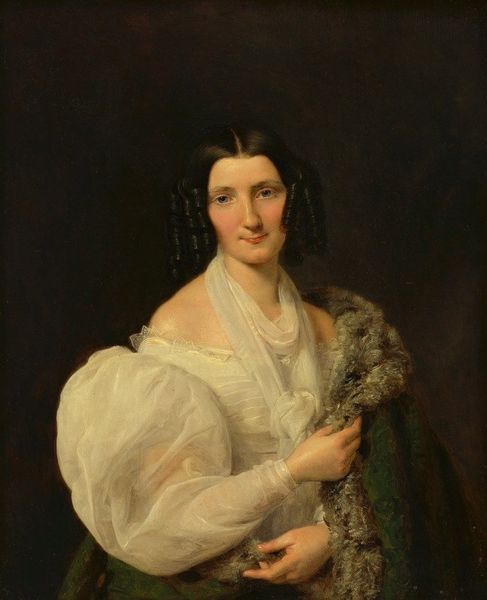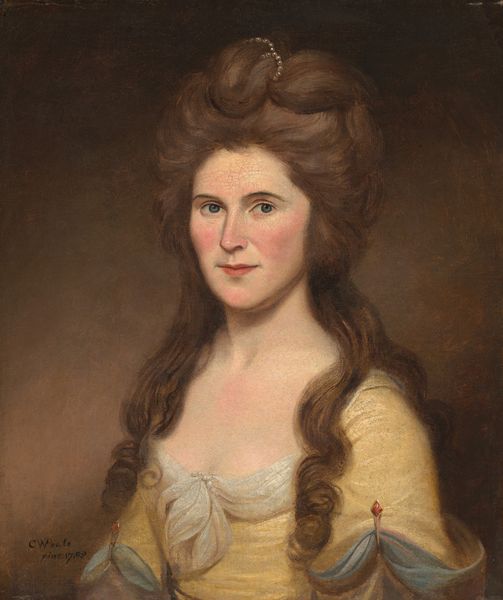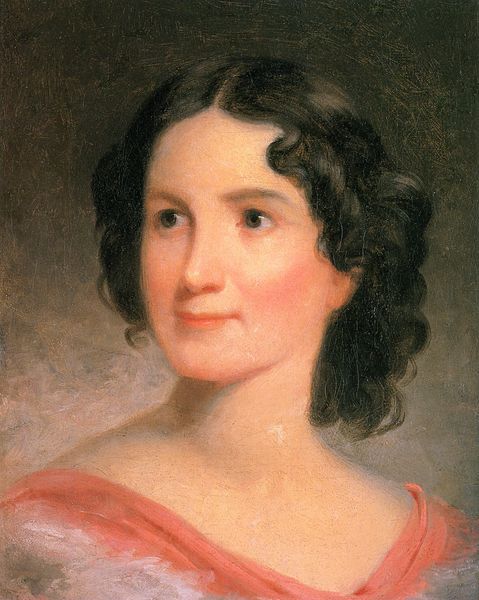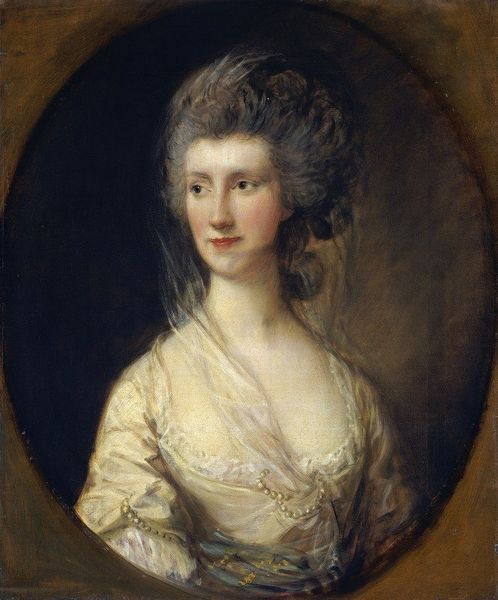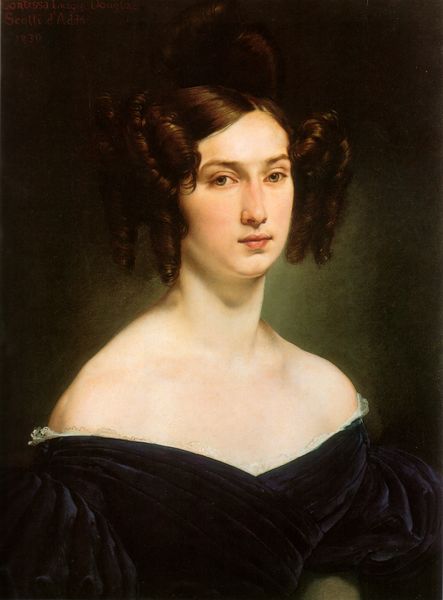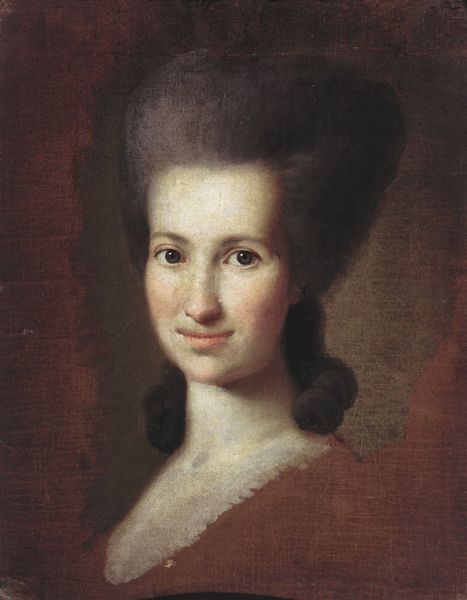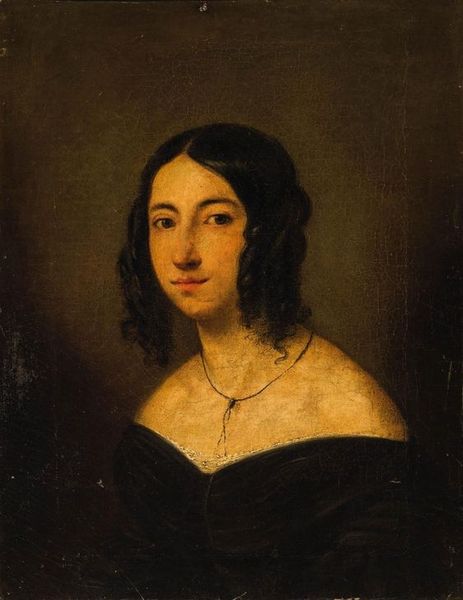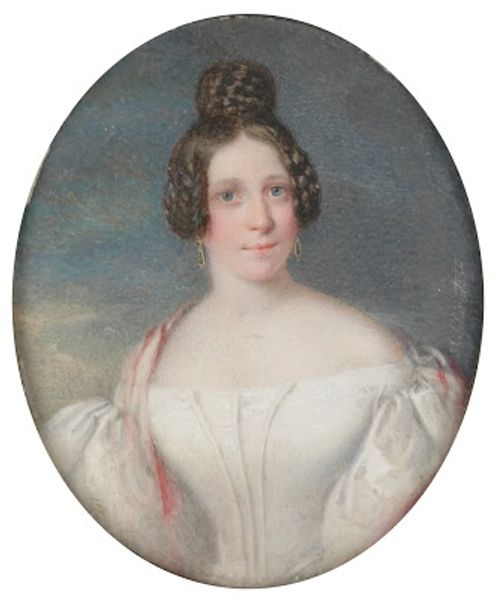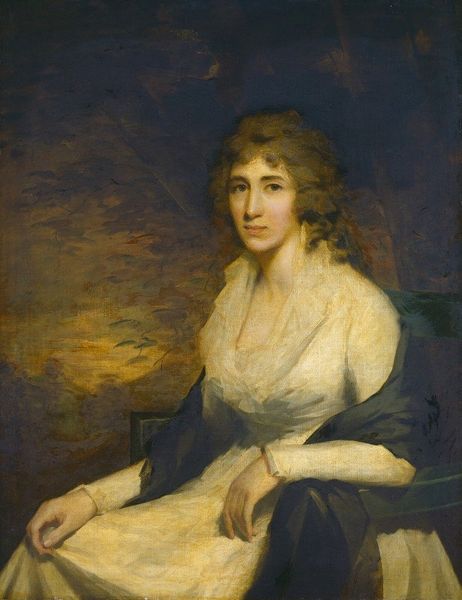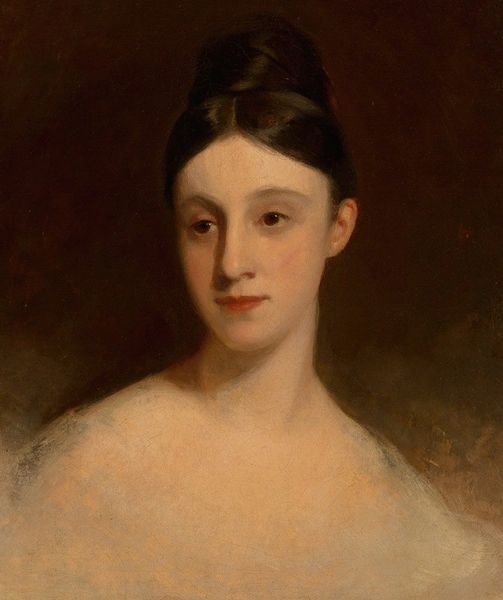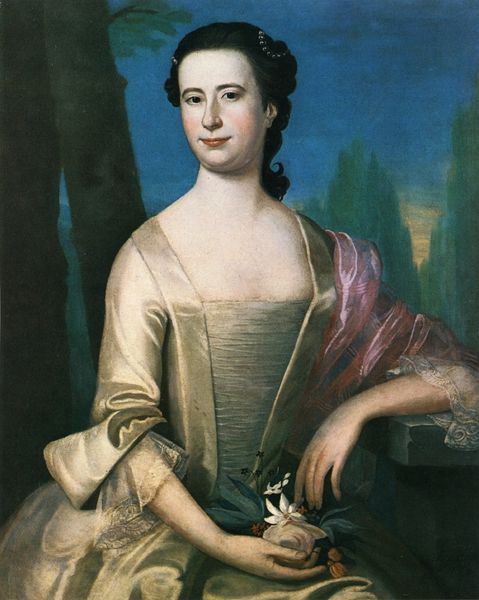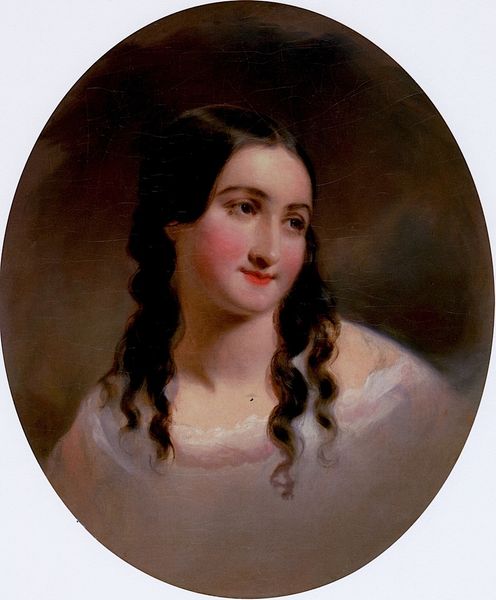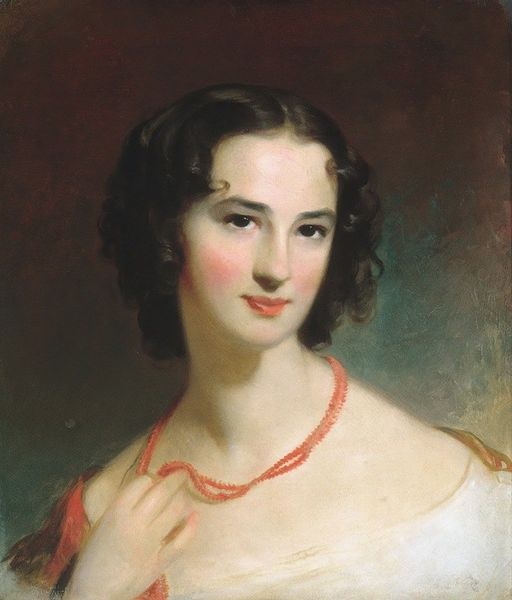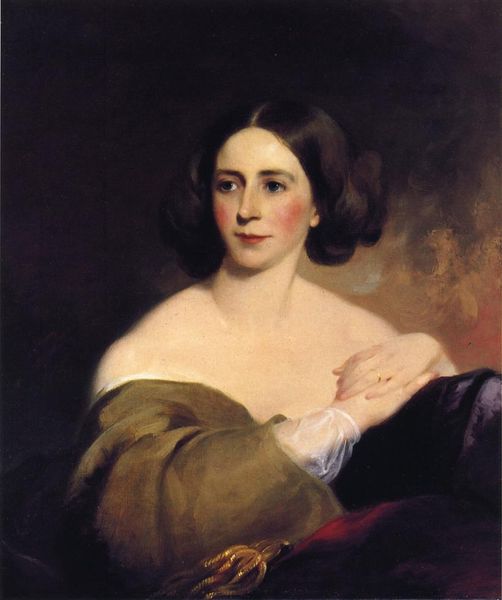
painting, oil-paint
#
portrait
#
painting
#
oil-paint
#
figuration
#
romanticism
#
academic-art
Copyright: Public domain
Editor: This is Thomas Sully's 1836 portrait of Mary Ann Paton, an oil painting. She's gazing upwards, and there's a serene, almost ethereal quality to her expression. What do you see in this piece beyond the surface portraiture? Curator: I see a representation deeply entrenched in the social conventions of the 19th century, but also a hint of subversion. The Romantic style, the focus on emotion, elevates Paton beyond a simple likeness. Consider, too, that Paton was a celebrated singer in a field dominated by men. Does her upward gaze symbolize aspiration beyond her prescribed role? Is Sully commenting on female ambition within the limited scope afforded to women artists and performers? Editor: That’s fascinating. I hadn't considered the context of her profession influencing the portrait's meaning. Curator: Exactly. Think about the gesture of her hands. They seem almost prayerful, demure. But could this also suggest suppressed power, creativity seeking release? These controlled representations of women were often the only avenues for suggesting inner strength in a patriarchal society. How much agency did Paton have over this image? Editor: So you're saying the portrait isn’t just a celebration of beauty, but possibly a commentary on the social constraints placed on women, especially women in the arts, at that time? Curator: Precisely. By examining the artwork within its socio-historical context, we begin to see it as part of a larger narrative about identity, gender, and the unspoken politics of representation. Editor: I never thought about a portrait holding so much more than just the appearance of the subject. Curator: And hopefully it inspires us to seek the broader picture behind any piece we're investigating.
Comments
No comments
Be the first to comment and join the conversation on the ultimate creative platform.
